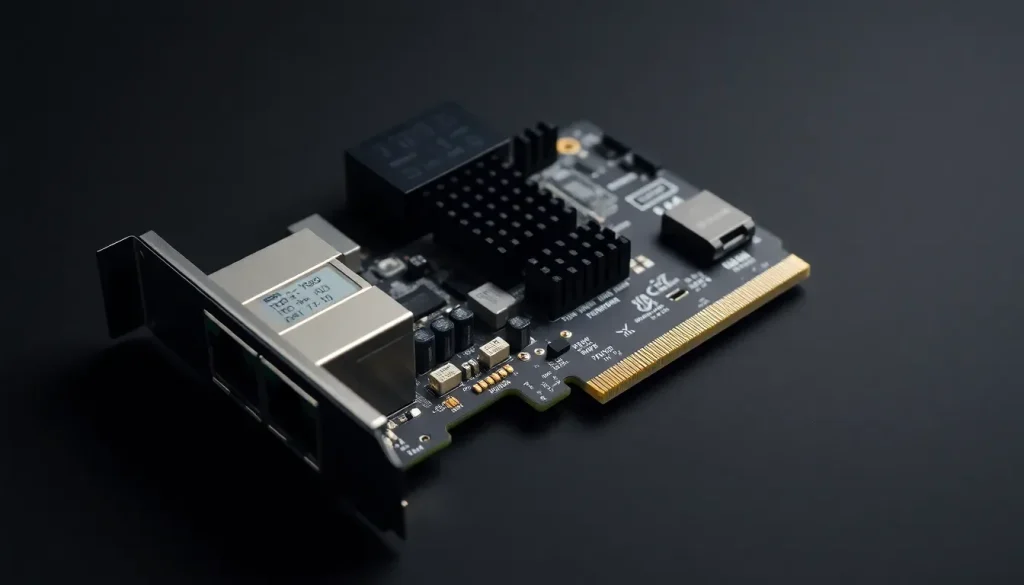TP-Link 10Gbase-T PCIe Network Adapter Review

In the world of networking, the quest for faster data transfer speeds is relentless. Enter the TP-Link TX401, a 10Gigabit PCIe network adapter that promises to elevate your connectivity experience without breaking the bank. But what exactly makes this adapter stand out? Let’s delve deeper into its features, performance, and overall value.
As more users seek to upgrade their home and office networks to accommodate high-bandwidth applications like streaming, gaming, and large file transfers, hardware like the TX401 becomes essential. This review will cover everything you need to know about this network adapter, ensuring informed purchasing decisions.
Overview of the TP-Link TX401 Network Adapter
The TP-Link TX401 is a 10Gigabit PCIe network adapter powered by the Marvell AQC113 chipset. This card is designed for users requiring high-speed networking capabilities at a reasonable price point. With an average cost of under $100, it presents a compelling option for those looking to implement 10Gbase-T technology without an enterprise budget.
Notably, this adapter operates in a low-profile PCIe Gen3 x4 card slot, making it versatile for various configurations, including mini PCs and NAS units. It comes equipped with both low-profile and full-height brackets, accommodating different setups with ease.
Key Features of the TP-Link TX401
- Versatile Compatibility: Supports 10Gbase-T, 5GbE, and 2.5GbE speeds, making it adaptable to various network environments.
- Low Power Consumption: Operates in the 3-5W range, significantly lower than many older models that could require up to 20W.
- Robust Chipset: The Marvell AQC113 chipset ensures reliable performance and is well-regarded in the industry.
- LED Indicators: Status LEDs on the I/O side help monitor connectivity and performance at a glance.
- Driver Support: Compatible with both Linux and Windows operating systems, facilitating easy integration into existing systems.
Performance Analysis of the TP-Link TX401
To evaluate the performance of the TX401, we conducted tests using iperf3, a widely used network performance measurement tool. The results were consistent with expectations for a 10Gbase-T adapter, demonstrating the card's capacity to handle high data throughput effectively.
Here’s a summary of our testing parameters:
- Test Type: Iperf3 bandwidth testing
- Environment: Standardized network conditions with minimal interference
- Expected Performance: Close to theoretical maximum speeds of 10Gbps under optimal conditions
The TX401 performed admirably, achieving consistent speeds that are essential for applications requiring high bandwidth. It is particularly promising for use in advanced testing rigs and environments where high-speed connectivity is a must.
Installation and Setup
Installing the TP-Link TX401 is a straightforward process. Here’s a quick guide to get you started:
- Power down your PC or server and unplug it from the wall.
- Open the case and locate an available PCIe x4 slot.
- Insert the TX401 firmly into the slot.
- Secure the card with a screw (if needed) and close the case.
- Reconnect your PC and power it on. Install the necessary drivers for your operating system.
Once installed, the TX401 should be automatically recognized by both Linux and Windows systems, allowing for rapid deployment in your network.
Comparative Analysis: TX401 vs. Other 10Gbase-T Cards
When considering the TP-Link TX401, it’s helpful to compare it with other popular 10Gbase-T network cards available on the market. Here’s how it stacks up against the ASUS XG-C100C, another well-regarded option:
| Feature | TP-Link TX401 | ASUS XG-C100C |
|---|---|---|
| Chipset | Marvell AQC113 | Aquantia AQC107 |
| Power Consumption | 3-5W | 5-9W |
| Operating Systems Supported | Linux, Windows | Linux, Windows |
| Price Range | Under $100 | Approximately $100-$120 |
This comparison highlights that while both cards offer similar features, the TP-Link TX401 is often more cost-effective, providing substantial savings while maintaining solid performance.
Where to Buy the TP-Link TX401
If you're interested in purchasing the TP-Link TX401 or would like to check current pricing, you can find it through this Amazon Affiliate link.
Community Insights and Reviews
Online communities, such as Reddit, have shared extensive feedback regarding the TX401, often focusing on its value and performance in real-world scenarios. Users appreciate the balance between affordability and functionality that this card provides, especially in home lab environments. For additional hands-on insights, consider watching reviews like this one on YouTube:
This video review showcases practical testing and user experiences, further informing potential buyers about the TX401’s capabilities.
Final Considerations
The TP-Link TX401 presents a solid option for those looking to upgrade to a 10GbE network without incurring exorbitant costs. With its low power consumption, compatibility with various systems, and reliable performance, it's positioned well within the market for budget-conscious consumers.
However, for users requiring specialized features like offloading capabilities, exploring options specifically designed for data centers may be advantageous. Overall, the TX401 remains an outstanding choice for enhancing high-speed networking in both personal and professional environments.




Leave a Reply